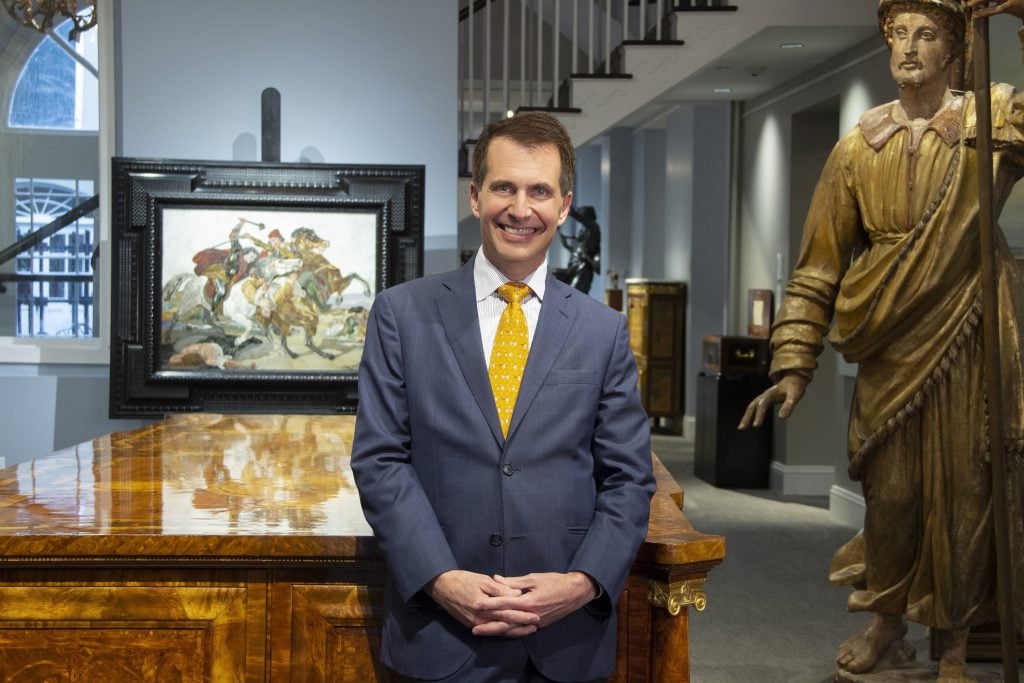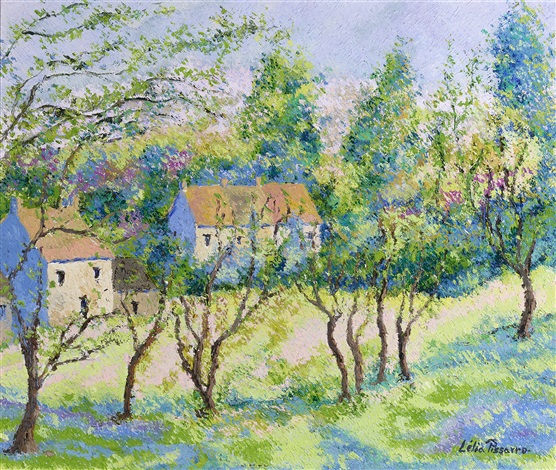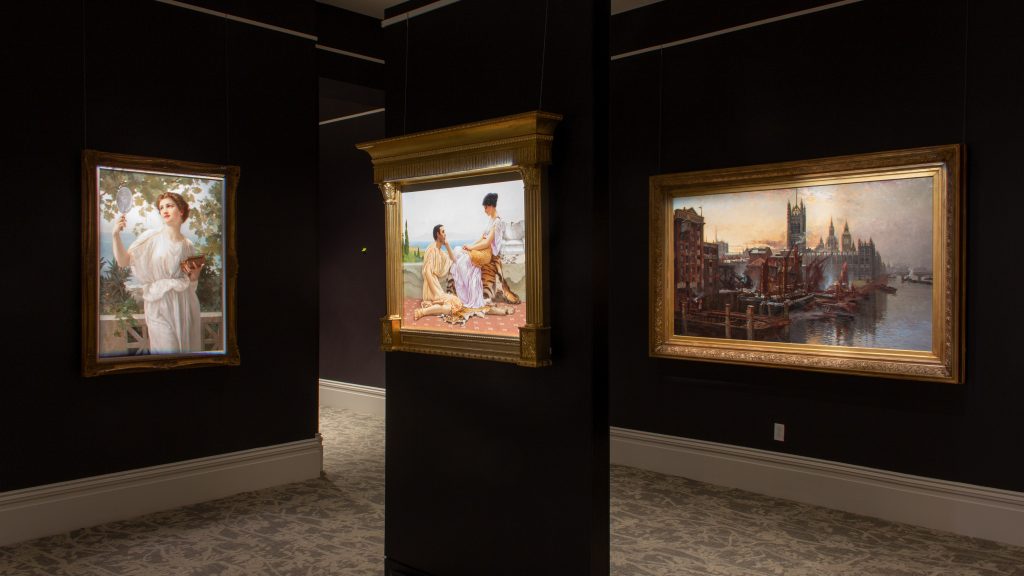New Orleans Dealer Bill Rau on the Painting He Wished He’d Kept, and What Hurricane Katrina Taught Him About Handling the Pandemic


Artnet Gallery Network

New Orleans’s M.S. Rau gallery is a jewel-box for the connoisseurship-minded collector. Founded in 1912, the gallery seems plucked from another era—brimming with a carefully curated assortment of artworks, antiques, and fascinating objects of esoterica, all meticulously researched and presented.
“We’re a dinosaur,” Bill Rau, a third-generation dealer and president of the gallery, says. “We have expertise across so many areas—that’s nothing that’s easily found these days.”
This unique wealth of knowledge has attracted a loyal coterie of collectors and, even throughout the pandemic, the gallery has thrived and is currently in the midst of expanding. This summer, M.S. Rau will open with enlarged galleries that have been integrated into neighboring historic buildings. Currently, the gallery is putting the finishing touches on “The Pissarro Dynasty: Five Generations of Artistic Mastery,” an exhibition focused on the incredible 100-year artistic legacy of famed Impressionist Camille Pissarro and his descendants.
On the cusp of the exhibition, we spoke to Bill Rau, who told us about growing up in the business, and the one painting he really wishes he didn’t sell.

Lélia Pissarro, Eternal Spring. Courtesy of M.S. Rau.
You’re the third generation at M.S. Rau, which is not that common in the United States. Were art and antiques part of your life growing up? And what lessons did you learn from your family about running the gallery?
Certainly art and antiques were a great part of my life growing up. I started working in the gallery when I was 14, after school and in the summers. I got paid $5 a day after school and either $10 on Saturdays or, after my raise in high school, $15 a day. I was one of the rich kids! Not in that my family had money, but in the sense that I didn’t have to ask my parents for money if I wanted to go to a movie or buy records or whatever. The lessons I learned from my family over the years were mostly business lessons, but I did pick up an extraordinary of knowledge about art and antiques just by osmosis.
Did you always know you would one day take the helm of the gallery?
All I knew is that I wanted to work here. It’s weird, but it never really crossed my mind. I can’t even tell you when exactly it was that I became president of the company because my responsibilities didn’t change. My uncle was retiring and it followed naturally. I don’t think I got a raise, either. Growing up in a family business, we did everything from high-flying things to sweeping the floors and mopping the bathroom. None of that changed. I was the only one in my generation in the business, so if anyone was going to take it over it would be me, but it was never even something I really thought about.

Courtesy of M.S. Rau.
What makes M.S. Rau unique?
We’re a dinosaur, and by that I mean we have expertise in so many different fields. We’re not a gallery that someone can come in and compete with. Some bigwig could say, “Here’s $500 million, go take down Raus” and it just wouldn’t work. We have connections that go back generations and there’s a kind of expertise in materials from jewelry to porcelain to silver to paintings that people know they can get here.
How do you source the works that you sell at the gallery?
Truth be told, for many of these objects, it’s not the first time they been bought or sold. And we’ve been in business for 109 years, so oftentimes people return to us. We’ll get calls with offers all day long. That’s not to say that we don’t go hunting for the best of the best, because of course we do, but most things I’ll get a phone call asking, “Would this be of interest to you?” or “My father had this and you know, he always thought of y’all,” stuff like that.

Sir Winston Churchill, Tower of the Koutoubia Mosque (1943). ©Christie’s Images Limited 2021.
Do you have a work that you most regret parting with?
We just saw the hammer go down on it at Christie’s. Now it’s public knowledge, but some years ago we sold Winston Churchill’s most important painting to Brad Pitt. As you know, Churchill was an artist. Roughly a third of his paintings date before World War II and roughly two-thirds from after the war. He painted one during the war, right after he and Roosevelt were at the Casablanca conference. There are stories of them drinking and singing songs one night watching the sunset over Atlas mountains. And the next day, Churchill turned to his aide and said, “Bring me my paints” and he went and painted this scene and then sent it to FDR as a gift.
So it was a gift from one of the most important people in the 20th century to another of the most important people of the 20th century. We wound up with it and sold it to Brad Pitt who gave it to Angelina Jolie. Now it just sold, with premiums, for close to $13 million. I heard rumors that it may be coming up and I called Brad Pitt’s office and they never called me back. And I understand why now—he didn’t own it anymore. The painting has such a remarkable story and that’s one of the very few times I have been very sorry to have let something go.
How did the gallery adapt to the pandemic and what lessons did the past year bring?
That’s a great question. I was speaking to a neighbor of mine yesterday who runs a law firm and we both sort of came to the same exact conclusion that the experience of Hurricane Katrina prepared us in certain ways for this year. The pandemic is far worse for the world than Katrina but, at a local level, it was very acute and more painful. What we learned from Katrina is that not everybody looks at everything the same way. Some people were traumatized, other people didn’t see the scope at once. And to get through a situation like that you have to have strong leadership. We have 64 employees here. We paid everybody during Katrina. We paid everybody through this, too, and we told them we would. And when we could get back to work, I was expecting everybody to be ready, too. There are so many rumors in these crisis times that we can laugh about at a distance, but at the moment, you just don’t know, and you just have to use the best judgment you can.
Does it feel like things are getting back to normal in New Orleans? Is the energy back?
For the city things are heading in the right direction, but still far from normal. I’ve been vaccinated and went out for dinner for the first time the other night and that was great. But it feels like things are running at half-speed, with a kind of lag, but for New Orleans to feel like New Orleans, we’re going to need much more than that.
But as far as a business, we’ve done very well. Here’s the thing, our qualified foot traffic is down 95 percent. but what that’s allowed us to do is spend more time on the phone, speaking to people, and sending out images. So what we’ve lost in foot traffic was gained back through getting in touch with clients who are important to us that we may not have had time for before.
What’s your advice for a first-time collector?
Oh, that’s an easy one: Buy it if you love it. People ask me all the time about art as a financial investment to get into long-term, to which I say, you have to buy something you love because if you love it, it pays a dividend to you every single day.
If you could own any artwork, what would it be and why?
I would own Michelangelo’s Moses. Every time I’ve seen it I just go, “whoa.” It’s not something you could ever fully see in a photograph. It’s just a powerful thing with a presence—Moses is seated at some eight feet high. I would take it home if it wouldn’t really piss off a lot of Italians.
If you were not an art dealer, what do you think you would be doing?
My last job was mowing grass in a summer camp, so, to be perfectly honest, there are no other jobs for me.